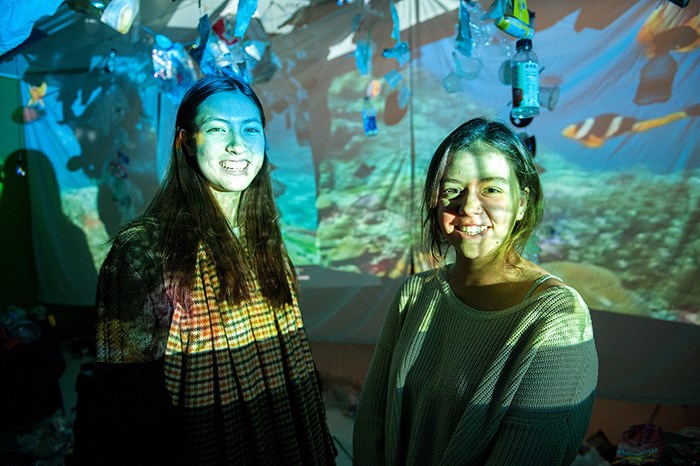Students at Howe Sound Secondary have found a creative way to show exactly how much plastic waste the school produced in a week.
Members of the ECO Club transformed a classroom into an art installation, called “Ocean of Plastic,” to show how the vast amount of plastic that is thrown away. They hung plastic containers from the ceiling and lined the walls.
Other students watched the documentary A Plastic Ocean, which examines the starting amount of plastic in the ocean, and then toured the installation.
In the documentary, researchers found more plastic than plankton in the Pacific Ocean. The filmmakers say that plastics, once they enter the ocean, break up into small particulates that enter the food chain where they attract toxins. These toxins are stored in seafood’s fatty tissues, and eventually consumed by us.
“We hope that by having students face the plastic that we, as consumers, are responsible for, this might allow us to engage in meaningful dialogue about what we need to change,” said Kathy Cormack, a teacher who helped the students with the large-scale project.
Using reusable bags, buying boxes instead of bottles, purchasing food – like cereal, pasta and rice – from bulk bins, reusing containers, ending the use of plastic straws and shopping in bulk are some of the ways to reduce your plastic footprint.



